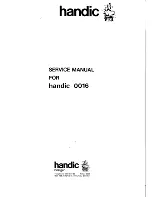
General
Spurious Response
75 dB (nominal)
Adjacent Channel Selectivity
75 dB @ ±25 kHz (nominal)
Audio Output Power
2.5 watts (10% Distortion, 8 Ω load)
Power Requirement
360 mA @ 13.8V DC at squelched, 920 mA @ 13.8V DC at maximum audio output
IF Frequencies
1st 41.925 MHz, 2nd 455 kHz (1st 21.7 MHz, 2nd 455 kHz for DSC)
REFERENCE TABLES
NOTE: This radio does not support AIS channels.
Channel Descriptions and What They Mean
The table below lists the display name or channel description used in the following tables and what each description means.
Channel name/description
Used for
DISTRESS SAFETY AND CALLING
primarily emergency messages and distress calls
INTERSHIP SAFETY
safety messages from one ship to another, or from a ship to Coast Guard aircraft
NON-COMMERCIAL (recreational or voluntary ships only)
messages about the needs of the ship, including fishing reports, rendezvous,
scheduling repairs and berthing information
COMMERCIAL (working ships only)
messages about the needs of the ship or the business the ship is engaged in
PUBLIC CORRESPONDENCE/MARINE OPERATOR
calls to the marine operator at a public coast station. Marine operators can
connect you to the telephone network so you can make and receive calls. (There
is usually a charge for this service.)
PORT OPERATIONS/VTS (vessel traffic system)
messages about the movement and safety of ships in or near ports, locks or
waterways. In certain major ports, some channels may be restricted to specific
types of port operations messages.
NAVIGATIONAL/BRIDGE TO BRIDGE
messages about ship navigation, for example, passing or meeting other ships,
maneuvering through locks, or navigating around drawbridges. Messages must
be short!
STATE CONTROL
messages about government regulation and control, boating activities, or
assistance to ships; also used to talk to ships and coast stations operated by
state or local governments
DIGITAL SELECTIVE CALLING
DSC signals only (no voice communications allowed at any time)
VHF595 RADIO
1-800-BOATING
28













































